How Does a Butterfly Survive Winter?
Updated: Nov. 02, 2023
When the weather turns cold, you may wonder what happens to a winter butterfly. Find out where different butterflies go in the winter season.
Winter Butterfly Life Stages
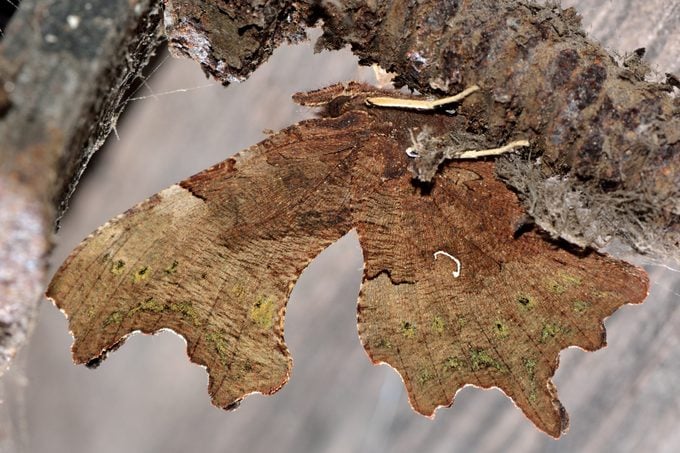
Butterflies employ strategies to survive the blankets of snow and bitter winds marking the winter months. With the cold winds starting to blow in, you may be wondering where your favorite butterfly visitors go in winter. Many venture to warmer climates (most people are familiar with the amazing long migration of monarchs), but more of them than you might think hunker down in your backyard. “The great majority of butterflies stay where they are. They spend the winter where they spend the summer,” says Jeffrey Glassberg, biologist, author and president of the North American Butterfly Association. Shorter days trigger a winter butterfly to get ready, which could take the form of five different strategies depending on the species.
How do bugs, moths and butterflies hibernate?
Eggs
Some butterflies lay their eggs in late summer or fall, on, or close to, their specific host plants. The eggs hatch the following year in spring, once the host plant has put on new growth. “Female butterflies are choosy, selecting locations that allow their emerging larvae to access fresh food as soon as they hatch,” says Karen Weaver, interpretive content developer for the Missoula Butterfly House. Butterfly eggs might appear pinkish and diskshaped, or more like upright yellow, orange, gray or green capsules— or they can even look like aphids.
- Coral hairstreak (Satyrium titus)
- Purplish copper (Lycaena helloides)
Check out 5 essential fall butterfly garden tips.
Caterpillar
Many late-season caterpillars use natural materials to protect themselves from the chill of winter. “Larvae tend to hunker down in a protected place in late summer or autumn,” Karen says. “Curled leaves, seed pods, crevices under rocks, and soil are common places, while some larvae overwinter in groups in silken nests.” She also notes that the larvae, as well as the eggs, are extremely camouflaged to avoid predation by birds and mice.
In the spring, these caterpillars don’t reemerge until their host plants have begun growing, so many of them use early spring wildflowers or budding tree leaves as hosts.
- Great spangled fritillary (Speyeria cybele)
- Red-spotted purple / White Admiral (Limenitis arthemis)
Plant a caterpillar cafe in your butterfly garden.
Chrysalis
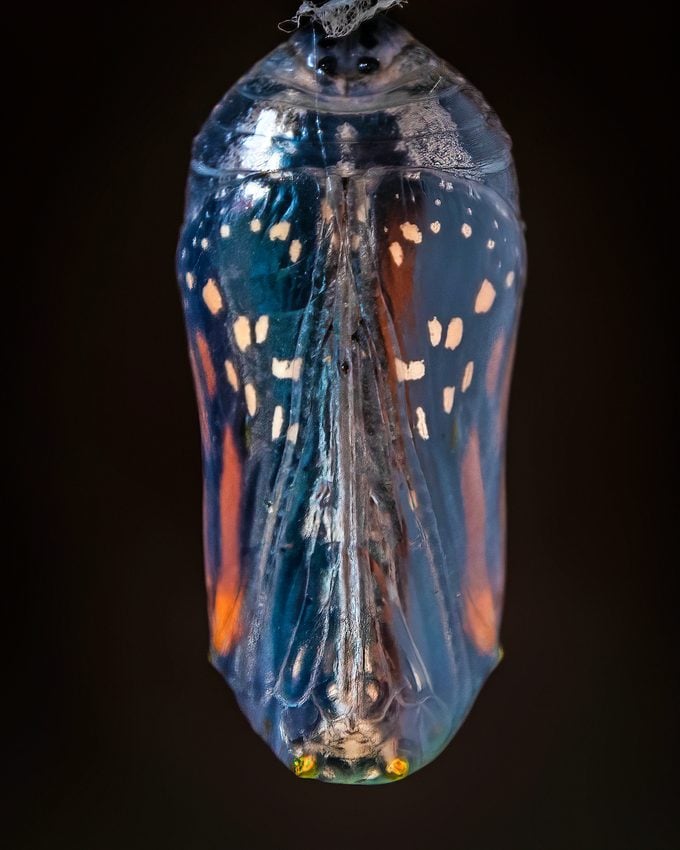
Instead of creating a winter nest from leaves or other materials, some butterflies, such as swallowtails, checkered whites and orange sulphurs, weather the cold within a chrysalis. Butterflies who spend the winter in chrysalis find a sheltered place like overhangs or deep shrubbery. During this period the butterflies enter diapause, which is when their development ceases and antifreezing chemicals allow the pupae to survive extremely cold temperatures. Once the days lengthen, the pupae resume their transformation before emerging from their chrysalises as fully grown adult butterflies, just in time for fresh blooms on nectar plants.
- Tiger swallowtail (Papilio glaucus)
- Spring azure (Celastrina ladon)
What does a monarch caterpillar and chrysalis look like?
Adult Butterfly
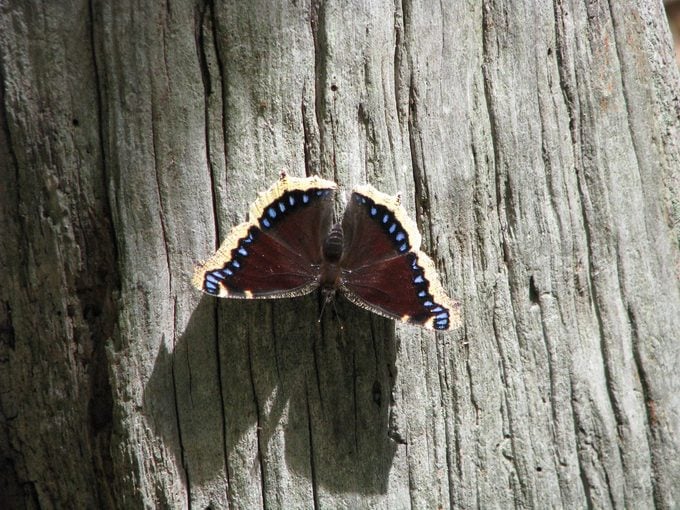
Despite their delicate-looking wings, some kinds of butterflies choose to brave the cold season as adults. “After adults take a summer siesta in mid-to late summer, they resume activity in late summer or fall before overwintering,” says Karen. “They feed on flowers, sap flows and rotting fruit to build up fat reserves to survive the three to six months of overwintering.” Once they’ve filled up, these butterflies tuck themselves into the nooks and crannies of a tree, a crack in a rock, or leaf litter. Adults reemerge in early spring and dine on sap and scat before flowers start producing nectar. These are usually the last butterflies to be seen in an area each fall, and the first to reappear in the spring.
- Mourning cloak (Nymphalis antiopa)
- Comma (Polygonia comma)
Check out beautiful butterfly pictures you HAVE to see.
Migrate or Move South
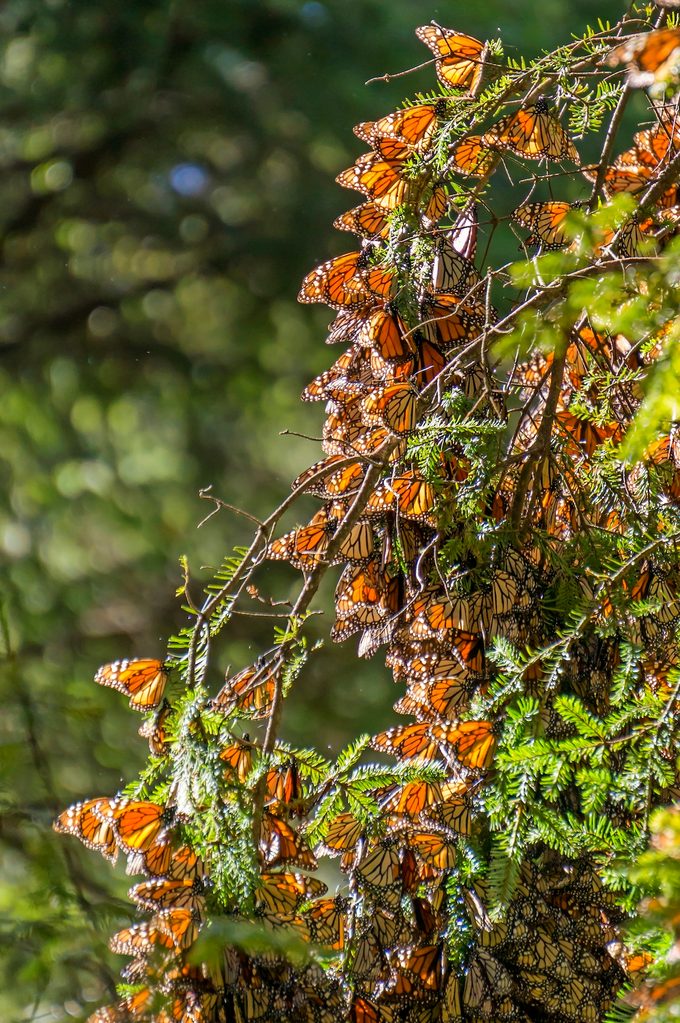
Remaining in their summer range isn’t an option for all species. “There are a bunch of butterflies that can’t survive freezing at all,” says Jeffrey. The monarch is best known for its epic annual journey, but other butterflies follow equally amazing courses. Red admirals’ favorite food is nettles, and they are known to sometimes follow the plant in enormous numbers as it blooms from Canada to southern Texas. And scientists are still learning how painted ladies take advantage of upper-level air currents, with populations in the Eastern Hemisphere traveling from sub-Saharan Africa to the Arctic Circle over multiple generations.
Others simply shift their populations to the southern part of their range, like common buckeyes (Junonia coenia).
- Painted lady (Vanessa cardui)
- Variegated fritillary (Euptoieta claudia)
Learn more about the painted lady butterfly life cycle and migration.
Create Cozy Winter Butterfly Homes
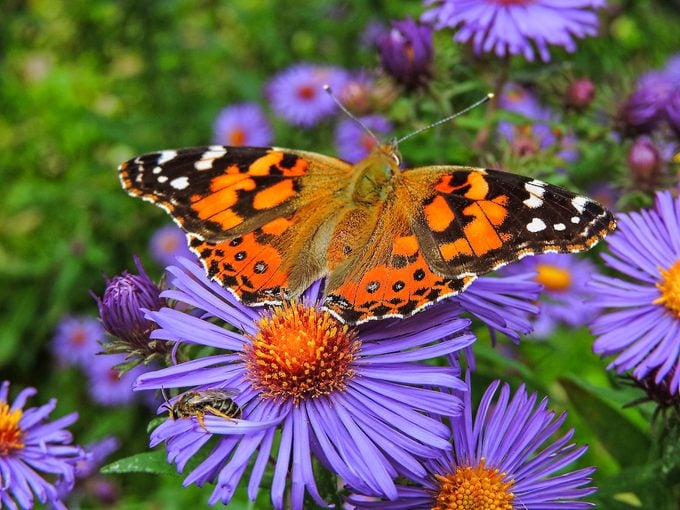
You can help a butterfly survive winter, no matter how they do it, with a few simple actions.
- LEARN which butterflies live in your area and grow native plants for those specific species.
- SKIP raking the leaves so overwintering larvae have a place to hide.
- LEAVE garden debris, particularly standing plants, until midspring.
- AVOID using pesticides as much as possible.
- If you find what looks like a dead chrysalis in your garage or garden shed in the winter, leave it there. The butterfly inside may well emerge when spring comes.
- Offer nectar plants in your garden in early spring and late fall to help the first and last butterflies of the season.
Learn more with the year-round guide to butterflies.
